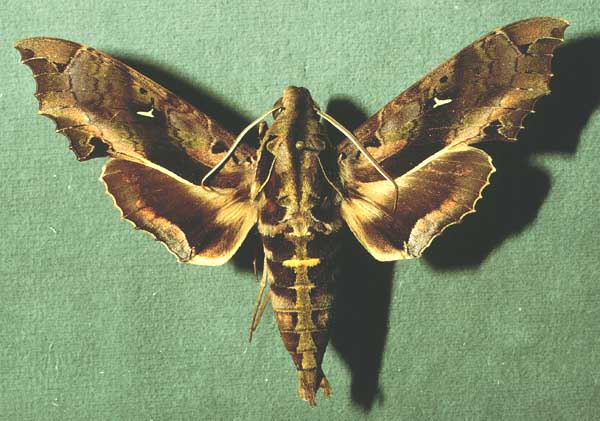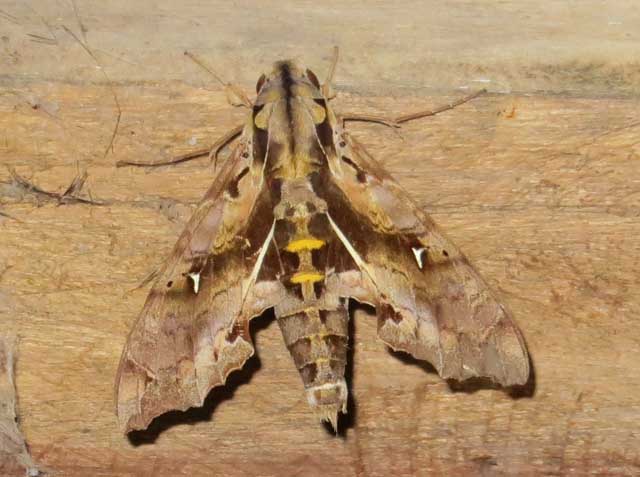DISTRIBUTION: Hemeroplanes
ornatus (wingspan: 90-95 mm)
flies in Venezuela (specimen type locality);
Ecuador: Zamora-Chinchipe (BF);
Bolivia: La Paz, Cochabamba;
and north through Costa
Rica to Belize, Guatemala (JM), and Mexico.
I believe the genus name comes from the Greek "Hemero" = everyday life and "planes" = rhealm.
In H. ornatus the yellow bands on abdomen upperside are restricted to a series of narrow dorsal patches.
The apical fringes also more-or-less yellowish, and the tergites are laterally almost black, as in Hemeroplanes diffusa. CATE
Of the four Hemeroplanes species, H. diffusa is the only one that does not have the silver streak basally forked;
Hemroplanes longistriga is the only one with elongated extensions of the silver streak; Hemeroplanes ornatus
has upper yellow abodminal bands that are retricted (but clearly visible) and do not cross the entire abdomen, while those same upper yellow bands extend dorsally across
entire segments in triptolemus.
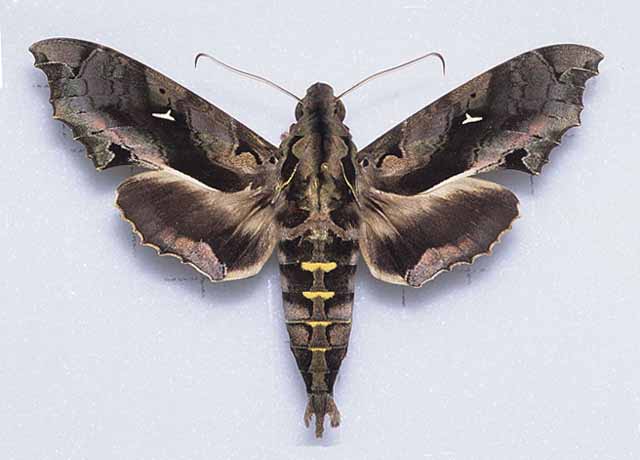
Hemeroplanes ornatus male, courtesy of Hubert Mayer
copyright.
FLIGHT TIMES: There are probably at least two generations annually
with peak flights in January-February and again in June-July.
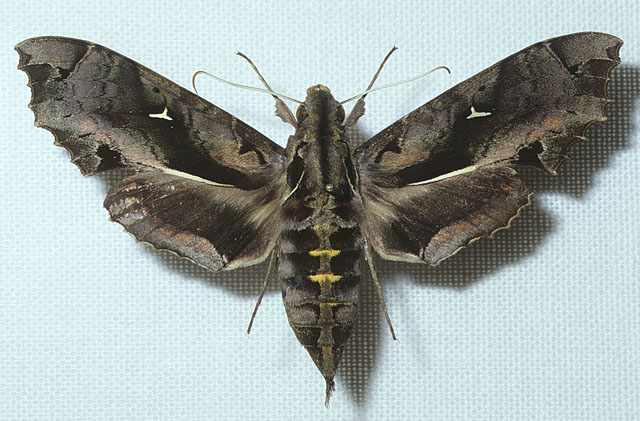
Hemeroplanes ornatus female, courtesy of Hubert Mayer
copyright.
ECLOSION:
SCENTING AND MATING:Females call in the males with a
pheromone released from a gland at the tip of the abdomen.
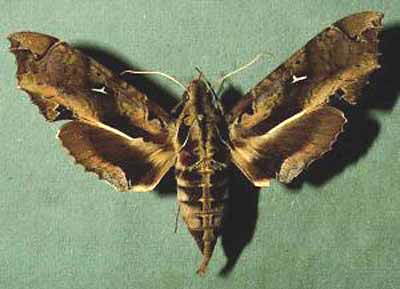
Hemeroplanes ornatus female, courtesy of Dan Janzen.
EGGS, LARVAE, PUPAE:Larvae feed on
Fischeria panamensis.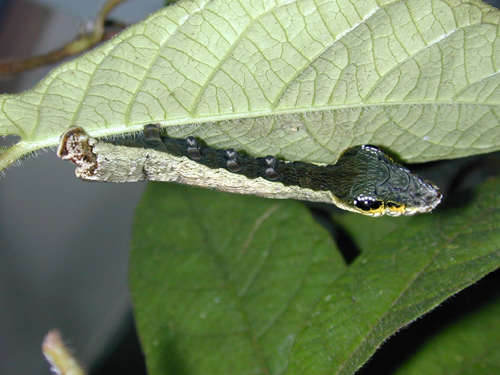
Use your browser "Back" button to return to the previous page.
This page is brought to you by
Bill Oehlke and the
WLSS. Pages are on space rented from Bizland. If you would like
to become a "Patron of the Sphingidae Site", contact Bill.
Please send sightings/images to Bill. I will do my best to respond to
requests for identification help.
Enjoy one of nature's wonderments: Live
Saturniidae (Giant Silkmoth) cocoons.
 | 
Show appreciation for this site by clicking on flashing butterfly to the left.
The link will take you to a page with links to many insect sites. |

Hemeroplanus ornatus male, Para, Brazil,
on my home computer only.
| 